
Subaru Outback Estate (2003-2009) review
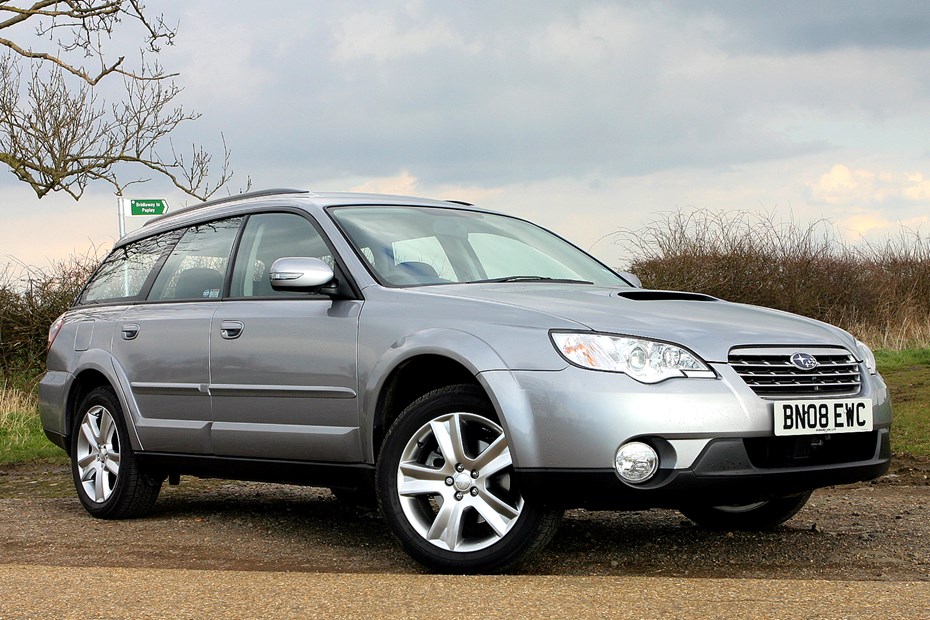
At a glance
| Price new | £20,235 - £30,590 |
|---|---|
| Used prices | £646 - £3,031 |
| Road tax cost | £265 - £735 |
| Insurance group | 23 - 30 |
Get an insurance quote with

|
|
| Fuel economy | Not tested to latest standards |
| Range | 394 - 676 miles |
| Number of doors | 5 |
| View full specs for a specific version | |
Available fuel types
Petrol
Diesel
Pros & cons
- Four-wheel drive security
- Capable off-road as well
- Large boot, robust build
- Interior lacks finesse
- Thirsty petrol engines
- Poor ride quality
Subaru Outback (03-09) rivals
Overview
Subaru earned a reputation for robustly-built and reliable cars that are also very capable off road throughout the 1980s and ’90s. Rally success helped the smaller Impreza win hearts and minds, but the Legacy remained a bit of a niche product until the jacked-up, plastic-clad Outback aligned with the growing appetite for SUVs.
In 2003 the third generation of Outback to be offered in the UK, based on the Subaru Legacy Mk4, consolidated the Japanese firm’s experience and reputation with two things British buyers love: a proper off-road appearance, and diesel power (introduced in 2008). It’s biggest rival was, arguably, Subaru’s own Tribeca. At least, for about a year.
Find a Subaru Outback Mk3 for sale near you.
As a large family estate car, the Subaru Outback Mk3 has a lot going for it, though it’s not the most popular of cars so you’ll need a good reason to seek one out. We’ll save you some time; if you’re considering the diesel, don’t. Early models are plagued with problems and as the cars age, they simply aren’t worth the bother. However, the 3.0-litre petrol is a worthy and stealthy alternative to an Audi A6 Allroad, and the 2.5-litre models can be reasonable on fuel.
There are few direct alternatives for your money but plenty of rivals, including the Audi mentioned above, the Volvo XC70, Skoda Octavia Scout or Superb Estate 4x4. At this age, for the budget you might also consider a Mercedes M-Class or BMW X5; it depends on what you find appealing about the Subaru Outback.
Subaru Outback Mk3 Common problems, known faults and buying guide
Before considering any Subaru but particularly an Outback, look at where it was registered and where it has spent most of its life. In common with many Japanese cars Subaru don’t go overboard with rust protection, and the secure all-wheel drive and friendly rural dealers mean many Outbacks were sold in locations like the Scottish Borders or North Wales, where muddy roads and winter with months of salt spray have plenty of time to work.
The youngest Outback Mk3s are over 12 years old now, so any car you’re considering is in the last years before cherished ones can be considered classics, and rust, wear and tear have had plenty of time to work.
1. Subaru Outback Mk3: rust is everywhere, but it’s better than they used to be
Owners of Subarus are used to rust, the original Legacy could look pretty rough after five or six years. The Legacy Mk4 is a stronger, heavier car but rot can still take hold. Look at roof, sunroof edges, windscreen surround, edges of doors, sills and floor, and check the MoT history online before viewing a car to see where advisories note problems underneath.
Rust also affects brake pipes, subframes and suspension components, and working on the rear axle of the Outback is more complex than typical FWD cars, so any comments about corroded rear brake pipes should be taken seriously (as they should for any all-wheel drive car with complex subframes to remove).
2. Subaru Outback 2008-2009 diesel engine: avoid it
Really, there’s no point in sugar coating this. Subaru’s boxer engines are thirsty and a diesel sounds like a great idea, but with no experience of mass-producing diesel cars the first generation was always going to be a risk. It was the first passenger car with a boxer diesel, ever, after more than a century of combustion engine evolution. There’s probably a good reason why no-one else had done it.
Aside from being less efficient and refined than competing conventional diesel engines, it’s very unreliable; by the time the worst issues were resolved, the Outback had been replaced with the Legacy Mk5 and Outback Mk4. Subaru stopped developing the diesel in 2016 and sales ended soon after.
Problems include blocked oilways from manufacturing errors, faulty/mistimed injectors, allegedly broken cranks, failing timing belts, blocked DPFs and just a general lack of knowledge from dealers, meaning faulty cars would run up thousands of pounds of bills in diagnostic and ‘try and see’ fixes.
3. Subaru Outback Mk3 clutch and transmission problems
Not really problems, as such, but something to be aware of. The manual gearbox Outbacks are tough on clutches and dual-mass flywheels. Watch for barks, yelps and grumbles when engaging the clutch. As popular towing cars there’s an extra reason to make sure the clutch is working correctly; both if you want it tow, and if it’s been used for towing before you get it. Repairs are moderately expensive, but it is a consumable if the rest of the car is good.
Automatic Outback Mk3s have a relatively conventional five-speed gearbox, if it’s been serviced properly and the cooler lines haven’t rusted it should outlast the car.
4. Subaru Outback Mk3 six-cylinder petrol engine
The distinctive note of a ‘Scooby’ comes from a flat-four and a big-bore, and most petrol Legacy versions have a muted version of the same engine. Unlike the Forester and Impreza that relied purely on turbocharging for big power, the Legacy and Outback got a more refined, six-cylinder 3.0-litre petrol. Based on a newer engine design than Subaru’s previous six-cylinder offering, the SVX, it was improved for the Subaru Outback Mk3 for better economy but remained only available with an automatic gearbox. As long as it’s been maintained correctly it’s a reliable, if expensive to run, option.
5. Subaru Outback Mk3 electrical issues
Subaru started introducing more gadgets on the Outback Mk3 and Legacy Mk4, and improved the trim quality if not the rather functional nature of the interior. The infotainment system is now quite dated, but generally reliable – which is a good thing as upgrades mean swapping the climate control module from the original radio to a new faceplate. Most of the Subaru Outback’s electrical systems are more reliable than average with few reported issues.
Why buy a Subaru Outback Mk3 now?
As it evolved to take on SUVs that challenged Subaru’s traditional market, the Outback is remarkably capable off road, and an accomplished car for towing. Petrol engines offer swift performance and although the ride height is increased, the fundamentally sound handling of the Legacy and Impreza remains intact. An Outback can be fun on rural roads.
It’s a car that has always stood out from the crowd, despite the rather subtle styling, and rivals tend to be less robust, more expensive, or both. The lure of the SUV proved too great for many buyers and even Subaru gave in, offering the short-lived B9 Tribeca. It’s worth noting that for UK buyers, the Outback remains part of the Subaru range but there’s no sign of a large, seven-seater SUV replacement.
Keep reading for our original review.



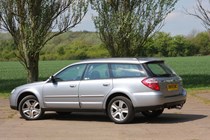
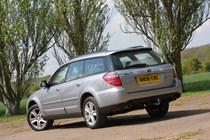
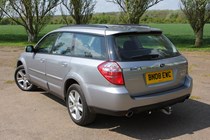
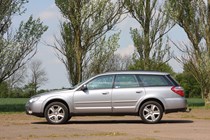
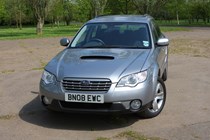
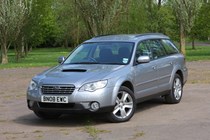
.jpg)
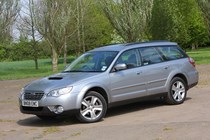
.jpg)
.jpg)
.jpg)
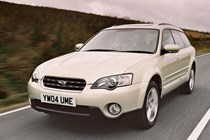
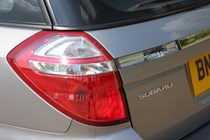
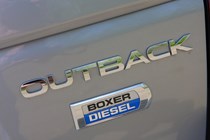
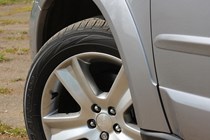
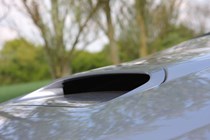
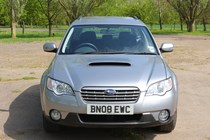
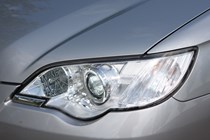
.jpg)
.jpg)
.jpg)
.jpg)
.jpg)
.jpg)
.jpg)
.jpg)
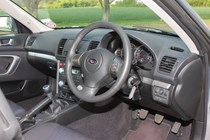
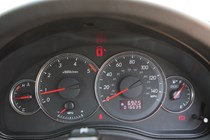
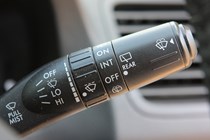
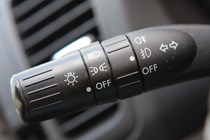
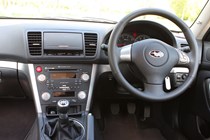
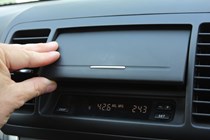
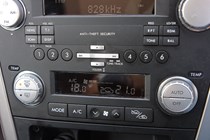
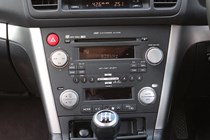
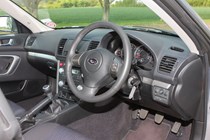
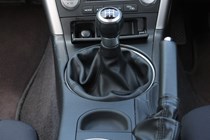
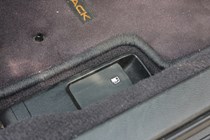
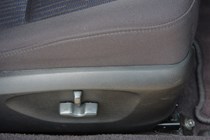
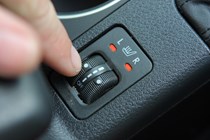
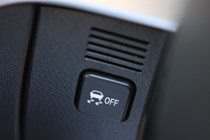
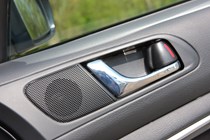
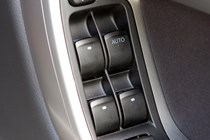
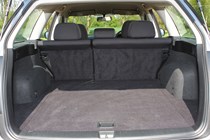
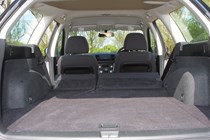
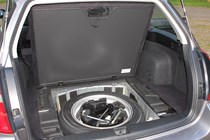
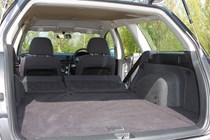
.jpg)
.jpg)
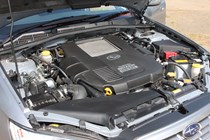
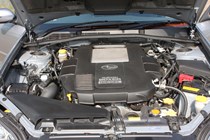
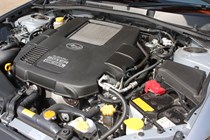
.jpg)
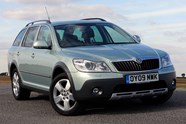
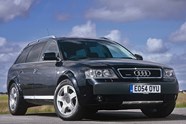
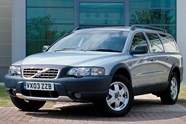







.jpg?quality=50)

.jpg?quality=50)
.jpg?quality=50)
.jpg?quality=50)







.jpg?quality=50)
.jpg?quality=50)
.jpg?quality=50)
.jpg?quality=50)
.jpg?quality=50)
.jpg?quality=50)
.jpg?quality=50)
.jpg?quality=50)




















.jpg?quality=50)
.jpg?quality=50)



.jpg?quality=50)